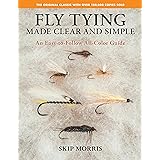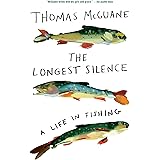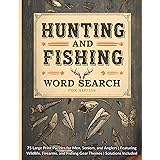Have you ever watched an experienced angler seemingly pluck fish from thin air, while you struggle to locate even a nibble? The secret often lies in “watercraft”—a deep understanding of aquatic environments and how fish interact with them. As highlighted in the accompanying video, mastering watercraft is about observing, interpreting, and predicting where fish will be on any given day. This guide delves deeper into these essential skills, transforming your approach to finding fish in both tranquil lakes and dynamic rivers.
Unlocking Fish Location: Essential Gear & Keen Observation
Before you even cast a line, your ability to observe is your most powerful tool. Equipping yourself with the right gear can significantly enhance this observational prowess. While many anglers overlook them, specific items can give you a crucial advantage in the quest to locate fish.
The Power of Polarized Sunglasses
Polarized sunglasses are not merely a fashion statement; they are an indispensable piece of fishing equipment. Standard sunglasses simply reduce light intensity, but polarized lenses uniquely cut through the glare reflecting off the water’s surface. This allows you to peer beneath the surface, revealing underwater structures, changes in depth, and even the subtle movements of fish that would otherwise remain hidden.
For instance, when scanning a far margin on a large lake, these specialized lenses can help you spot fish cruising in shallow water or identify weed lines where fish might be holding. Furthermore, they protect your eyes from harmful UV rays, making long days on the water more comfortable and safe. Investing in a quality pair can dramatically improve your ability to read the water effectively.
Binoculars: Extending Your Vision
While not an absolute necessity for every fishing trip, binoculars offer a distinct edge, particularly on expansive bodies of water. They allow you to survey distant areas—such as a remote shoreline, a snag-filled cove, or the mouth of a far-off inlet—with remarkable clarity. Spotting a fish crash, a subtle flat spot, or even a patch of disturbed water at a distance can save you valuable time and effort, guiding you to productive zones you might otherwise miss.
Consider their utility when fishing large reservoirs or big rivers where covering vast stretches of water quickly is key. Binoculars enable you to conduct a reconnaissance mission from a single vantage point, pinpointing potential fish locations before you commit to moving. This strategic advantage helps anglers make more informed decisions about where to focus their efforts.
Deciphering Visual Cues: Reading the Water for Fish Signs
Once you’re equipped to observe, the next step is knowing what to look for. Fish constantly give away clues to their presence and activity, if you know how to interpret them. From explosive jumps to subtle underwater disturbances, these signs paint a picture of what lies beneath the surface.
Fish Crashing and Showing
Perhaps the most obvious sign of fish activity is a fish crashing or jumping clear of the water. This spectacle can occur for various reasons, including cleaning gills, dislodging parasites, or actively feeding. The key insight, however, lies in understanding the context of these shows.
In colder months, like late autumn or winter, a single fish crash can indicate a large shoal of fish tightly packed together in that area. Fish often group up for warmth and safety during these periods. Consequently, casting a bait to a spot where you’ve seen a fish show during colder conditions can often result in a quick bite from a member of the underlying shoal, signifying a high concentration of fish.
The Riddle of Bubbles
Bubbles popping on the water’s surface can be a strong indicator of feeding fish, but discerning fish-induced bubbles from natural gas releases requires a keen eye. It’s a common myth that fish simply blow bubbles as they swim. Instead, most natural bubbles on a lake are caused by methane gas. This gas is produced by the decomposition of organic matter, such as leaf debris and aquatic plants, on the lake bed, eventually rising to the surface.
To differentiate, look for specific characteristics:
- Methane Gas Bubbles: These typically appear as large, singular bubbles rising in a consistent line from a fixed point. They tend to be uniform in size and lack any erratic movement across the surface.
- Fish-Induced Bubbles: These are generally smaller, appear in erratic clusters or patches, and often show slight movement across the surface. This chaos indicates fish are rooting around in the substrate, disturbing trapped gases and sediments as they feed.
- Photosynthesis (Pearling) Bubbles: Very small, consistent bubbles originating from weed beds are often oxygen released by plants during photosynthesis. While they indicate healthy aquatic vegetation, they are not a direct sign of actively feeding fish.
Discoloration and Churned Water
On clear lakes, spotting areas of discolored or “churned up” water can be a golden ticket to finding actively feeding fish. When fish feed aggressively on the bottom, they disturb the silt, clay, or mud, clouding the water in localized patches. This disturbance is often visible as a subtle “chocolatey” tint against the otherwise clear surroundings.
Such discoloration is a direct sign of fish rooting for invertebrates, larvae, or other food sources embedded in the lakebed. These muddy patches are not static; they may slowly expand or drift with minimal current. Therefore, identifying these areas means you’ve likely stumbled upon a feeding zone, a prime location for casting your bait and increasing your chances of success.
Baby Fish and Baitfish Activity
While you might not be targeting tiny fry or small roach, their presence is a strong indicator of larger predatory fish nearby. Schools of small fish, known as baitfish, form the base of the aquatic food chain. If you observe dense shoals of these small fish, especially if they are darting erratically or scattering on the surface, it’s a clear sign that a predator like a perch or pike is likely in the vicinity, actively hunting.
Predatory fish instinctively follow and hunt these baitfish, making their congregating areas highly productive spots. Watching for sudden explosions of baitfish at the surface or seeing them rapidly disperse can alert you to an active hunting ground, guiding your choice of lures or bait for larger species.
Flat Spots and Oil Slicks
The surface of the water, even when rippled by wind, can offer subtle clues to fish movement. A “flat spot” on the water’s surface—a localized area where ripples suddenly disappear—can indicate two main phenomena:
- Fish Movement: A fish swimming just beneath the surface can create a localized pressure wave, pushing water upwards and temporarily flattening the surface above it. This fleeting flat spot suggests active fish movement in the area.
- Oil Slicks: More persistent flat spots, especially over a baited area, can be caused by oil. When baits containing oil (like halibut pellets or groundbait) are introduced, the oil disperses, reducing the surface tension of the water. This makes ripples disappear, creating a noticeable flat patch. This is a positive sign, indicating that fish are actively feeding on your bait, disturbing the oil as they do so.
Lakes: Decoding Depth, Inlets, Wind, and Cover
Beyond visual cues, understanding the physical and environmental dynamics of a lake is crucial for consistent success in locating fish. Factors like water depth, the presence of inlets, wind direction, and natural cover all play significant roles in where fish choose to reside.
The Critical Role of Depth
Depth is one of the most vital pieces of information an angler can gather, as it directly influences water temperature and oxygen levels. Shallow water warms up much faster in direct sunlight, attracting cold-blooded fish in early spring seeking warmth. Conversely, deeper water retains its heat longer into the autumn and winter, offering a stable, warmer environment when surface temperatures drop dramatically.
Fish often use specific depths as thermal refuges, moving deeper to escape scorching summer heat or shallower to bask in spring sunshine. Understanding the bathymetry (underwater topography) of a lake allows you to target these preferred thermal zones. While a marker float (as shown in the referenced video) is excellent for precise depth mapping, observing the surrounding terrain can also offer rough estimates: often, the deepest water is found near a dam, while the shallowest is near an inlet.
Inlets: Oxygen and Food Highways
Inlets—where streams, springs, or waterfalls feed into a lake—are perennial hotspots for fish, especially during challenging conditions. These areas introduce fresh water, which often brings a slightly different temperature, increased oxygen levels, and new food sources. The influx of fresh, moving water creates a more oxygenated environment, which is particularly attractive to fish during hot summer mornings when overall lake oxygen levels can plummet.
Furthermore, inlets act as natural conveyor belts, carrying insects, larvae, and other small organisms into the lake, creating a consistent food supply. This combination of oxygen, fresh water, and food makes inlets prime locations to target, providing a reliable sanctuary and feeding ground for various fish species, particularly when other parts of the lake are stagnant or oxygen-depleted.
The Influence of Wind
Wind, often seen as a nuisance, is a powerful force that actively shapes fish behavior and location on a lake. When wind blows across the surface, it creates currents that push the warmer surface water and natural food sources (like insects) towards the leeward bank. Fish, being cold-blooded and opportunistic feeders, will often follow this warmer water and concentrated food supply.
Therefore, on a warm day, fishing into the wind (having the wind in your face) can be highly advantageous, as it positions you where warm water and food are accumulating. However, this rule reverses when surface water is cooling. If it’s been warm and then turns cold, a strong wind pushing that cold surface water towards you can drive fish deeper or to more sheltered areas. Generally, in cold conditions, fishing with the wind at your back allows you to target areas where warmer, deeper water is less affected by the chilling surface currents.
Cover and Structure: Fish Sanctuaries
Fish are instinctively drawn to cover and underwater structures for a multitude of reasons: protection from predators, ambush points for prey, shade from intense sun, and current breaks in flowing systems. On lakes, this includes a variety of features such as:
- Weed Beds: Offer shelter, oxygen, and a rich source of invertebrates.
- Lily Pads: Provide shade, cover, and attract insects on their leaves, which can fall into the water.
- Overhanging Trees: Offer shade, security, and often drop insects or fruit into the water.
- Snags (Submerged Branches/Trees): Create complex habitats, offering ambush points and refuge from current or predators.
- Drop-offs and Ledges: Provide access to different depths and temperatures, allowing fish to move vertically with ease.
Rivers: Navigating Flow, Bends, and Flooded Waters
River fishing presents a unique set of challenges and opportunities, primarily dictated by the constant movement of water. Understanding river dynamics—flow speed, the geometry of bends, and reactions to flooding—is paramount for successfully locating fish in these environments.
Flow Speed and Species Preferences
The speed of the river’s current is a primary determinant of where different fish species will hold. Fish have evolved to conserve energy, and their body shapes and behaviors reflect their preference for specific flow rates:
- Fast Flows: Species like Barbel, Chub, Grayling, and Trout are well-adapted to strong currents. They possess streamlined bodies and often require high oxygen levels, which are abundant in fast-flowing water. They’ll typically position themselves to intercept food drifting downstream, expending energy to hold their position but gaining ample feeding opportunities.
- Slower Flows: Fish such as Pike, Perch, Tench, Bream, and Carp prefer to conserve energy by seeking out slower, deeper water. These species are often ambush predators or bottom feeders who don’t thrive in constant high-current situations. They will be found in eddies, backwaters, and other areas where the flow is significantly reduced.
River Bends: Natural Fish Magnets
River bends are natural fish magnets because they create distinct hydrological features that fish exploit. The hydraulics of a bend mean that the main force of the current pushes towards the outside of the curve. This fast-moving water typically erodes the riverbed, creating deeper channels and scour holes on the outside bend.
Conversely, the water on the inside of the bend slows significantly, leading to deposition of sediment and often creating shallower areas with reduced current. Therefore:
- Outside Bends: Often host deeper, faster water, attracting species that thrive in oxygen-rich, moving currents, and those seeking deeper lies.
- Inside Bends: Offer calmer, sometimes shallower water, perfect for species that prefer to avoid strong currents and find refuge.
Weir Pools: Micro-Habitats Galore
Man-made structures like weir pools are essentially condensed ecosystems, providing a multitude of habitats in a confined space. The turbulent water immediately below the weir is highly oxygenated, making it attractive to species like Barbel and Trout. This fast water often scours out deep pools directly at the base of the weir, offering significant depth and cover.
However, away from the immediate turbulence, slack water eddies and deeper margins develop where the current dissipates. These calmer areas, often adjacent to large structures, become prime holding spots for species like Pike, Perch, and Carp, which prefer to conserve energy and ambush prey. Weir pools exemplify how various micro-habitats can exist side-by-side, catering to a wide range of fish preferences.
Flooded Rivers: Finding Sanctuary
Flooded rivers, characterized by fast, turbulent currents and an abundance of debris (twigs, leaves, rubbish), pose a significant challenge for both fish and anglers. During these extreme conditions, fish will actively seek refuge from the main flow to conserve energy and avoid being swept away. Key areas to focus on include:
- Sheltered Areas: Look for any natural or man-made features that break the main current—large boulders, fallen trees, deep pockets behind structures, or even flooded low-lying banks that offer a calm eddy. These spots provide respite from the raging torrent.
- Side Streams and Tributaries: When the main river is in full flood, smaller side streams that join it often become sanctuaries. The water in these tributaries is typically clearer and less turbulent, attracting a variety of fish like Roach, Perch, and even Pike, which follow their prey into these calmer havens.








